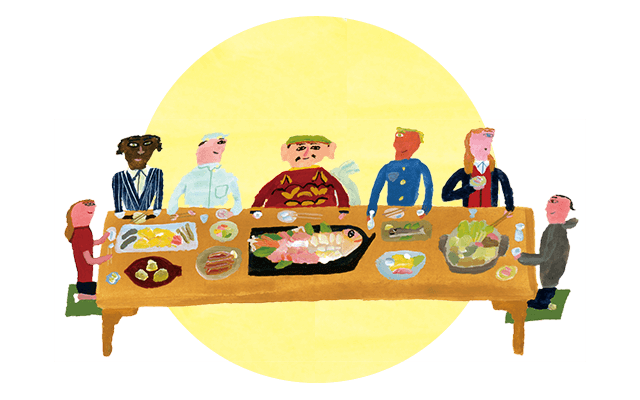
Harima Archives
2022.03.18 The Unknown World of Mirin

A Myriad of Mirin
There are various types of mirin. For example, junmai honmirin does not use auxiliary material such as saccharides and is made with a traditional brewing method. Additionally, the flavor, body, and sweetness created by the glutinous rice of honmirin are essential for Japanese cuisine. There are also mirin-style sweet cooking seasonings, which pursue how traditional mirin works, and cooking sake, a seasoning fermented with added salt for cooking. These have the effect of tenderizing ingredients and counteracting firm fish and meat odors.
Honmirin and Mirin-style
Honmirin is a brewed seasoning made from glutinous rice, rice koji, and brewed alcohol (shochu). Because it contains 13.5–14.4% alcohol, it is subject to the liquor tax. On the other hand, the main ingredient of mirin-style seasoning is glucose syrup, containing less than 1% alcohol. The former contains about 40% sugar, while the latter has a higher sugar content of 55% or more.
Mirin-making and Two Types of Shochu
Shochu is essential for brewing honmirin. The two types used are Class A shochu, made with a post-war industrial method, and Class B shochu, made in a traditional Japanese way. Class A shochu is distilled using a fermented liquid made from corn, sugar cane, etc. It is distilled in a multiple distillation machine which generates high levels of ethanol, to which water is added. Class B shochu uses rice or wheat as an ingredient and is distilled in a single distillation machine. Because of the single distillation, it brings out the aroma of the raw ingredients and retains umami.
The Merits of Mirin-style Seasoning
Mirin-style seasoning is a sweet seasoning with a higher effect than traditional mirin. Compared to honmirin, it gives dishes the necessary sweetness and sheen and has high sugar content. Because it contains less than 1% alcohol, it is not required to burn off the alcohol. This makes it possible to create mixed seasonings such as sesame seed dressing and vinegared miso. It is also suitable for babies and people with allergies who may react to alcohol.
Pickling with Mirin Lees
When making nukazuke pickles, the nukadoko must be stirred every day. However, this is unnecessary when making pickles from mirin lees (made using the mirin lees created when making mirin) using a vegetable pickle mix. When making nukazuke pickles, the nukadoko is stirred to mix enzymes throughout the nukadoko to encourage fermentation; in the case of mirin lees pickles, vegetables are buried in nukadoko to let the umami of the honmirin lees penetrate the vegetables, like with asazuke pickles. However, if the nukadoko is stirred, there is a chance that the lactic acid bacteria will go bad, so attention is necessary.



